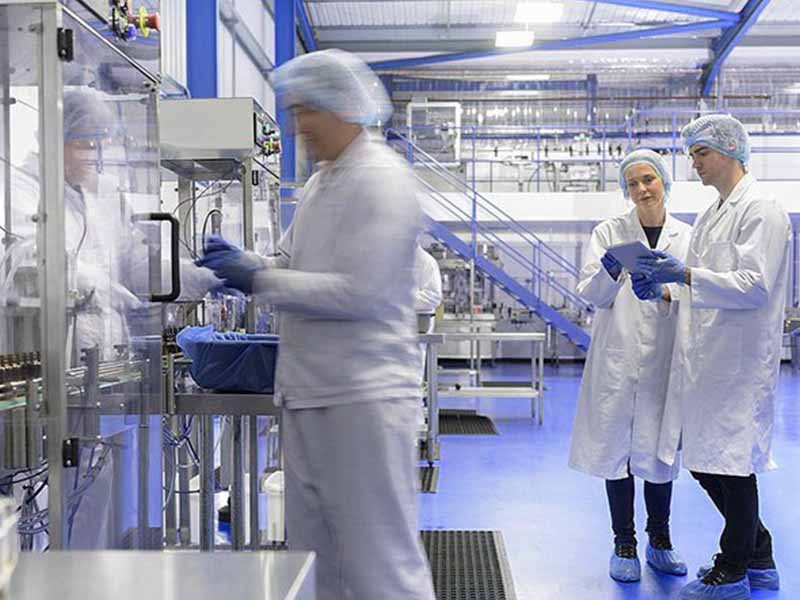-
Determine The Research Object
Among the energy consumption of pharmaceutical enterprises, the consumption of electric energy is the highest. A related study in the world analyzed the energy usage of pharmaceutical companies. If pharmaceutical companies want to achieve the goal of energy saving and emission reduction, the environmental control system and cooling water system are the main implementation goals of the optimal control strategy.
A detailed analysis of the environmental control system and the cold water system reveals that environmental control requires the supply of cold and heat sources. In the pharmaceutical industry, municipal steam or hot water prepared by municipal steam is used directly as the heat source. The overall consumption is low, and the consumption varies in different regions. The heat energy preparation and use are relatively gentle. If you want to save energy from here, you should mainly pass the design The secondary air return and heat recovery system is realized, so this article will not go into details, and the following will mainly analyze the cold source system.
-
System Composition Analysis
When evaluating the energy efficiency of the computer room, the comprehensive energy consumption and efficiency of each key equipment are generally used for calculation. In the automation system, it is necessary to monitor and record the power of key equipment in real time, and calculate the energy consumption value of the entire cold source system, and finally calculate the entire The cooling coefficient (COP) of the system.
-
Control Strategy Optimization
(1) Analysis Of Cooling Water Loop
The composition of the cooling water loop includes the condenser side of the chiller, cooling tower, cooling water pump, etc.
In the cooling water loop, the setting of the cooling water temperature is very important, and its influence mainly has the following points:
- The increase of the cooling water temperature will lead to the increase of the compressor power of the chiller, which will affect the energy consumption of the chiller.
- Since the speed/frequency and number of cooling towers are usually adjusted according to the cooling water temperature, the optimization and reset of the cooling water temperature set point will determine the cooling tower fan speed. There is an approximately cubic relationship between the speed of cooling tower fans and their energy consumption. Therefore, the adjustment of the cooling water temperature is bound to have a significant impact on the energy consumption of the cooling tower fan.

- The setting of the cooling water temperature also has a great influence on the operation control of the cooling water pump. According to energy conservation, it can be known that there is a coupling relationship between cooling water flow and temperature. Therefore, when the temperature of cooling water supply and return water is constant, the adjustment of cooling water flow will also affect the operating efficiency of cooling tower fans.
In addition, the wet bulb temperature of the outdoor environment and the number of cooling towers will have a certain impact on the optimal operating efficiency of the entire loop.
In the self-control strategy, usually the hydraulic balance of the cooling water loop should be ensured first, and then the variable frequency pump is used to control the water pump with constant pressure or constant pressure difference, and then the cooling tower fan is used to control the constant temperature difference between the supply and return water. At the same time, according to the external wet bulb temperature, the cooling water temperature is continuously reset to avoid the impact of external climate changes on the efficiency of the condensation end and the cooling tower.
(2) Chilled Water Loop Analysis
The chilled water system consists of chillers, chilled water circulation pumps and terminal surface coolers.
Since the outlet temperature of the chilled water is coupled with the number of chillers and water pumps in operation, the setting value of the outlet water temperature of the chiller needs to be optimized according to the external climate and the design margin. At the same time, the number of chillers should be set according to the cooling load. Change the loading and unloading.
The optimization of the chilled water loop mainly depends on the cooling load monitoring of the chilled water system. Adjust the chilled water temperature, and the load of the chiller will change accordingly. The operating number of chillers should be determined according to the addition and subtraction strategy of chillers. The chilled water circulation pump usually needs to be controlled by constant pressure difference according to the hydraulic balance requirements of the cold water circulation system to ensure the cooling capacity demand of end users.
(3) Analysis Of Terminal Air Conditioning System
During the operation of the combined air-conditioning unit, it is necessary to ensure that the clean environment complies with GMP requirements, and then find the best operating points for dehumidification, heating, and humidification on the basis of meeting the requirements.
Due to the long lag time of the feedback of the air conditioning system in automation applications, methods such as supply and return air cascade and split range control are usually used to stabilize the temperature and humidity curves to reduce energy waste during ambient temperature oscillations.
-
Epilogue
When designing the control strategy of the cold station, we should start from the overall efficiency, pay attention to multiple targets in the cold station system (terminal air conditioning unit, chilled water cycle, refrigeration unit, cooling water cycle, cooling tower), establish appropriate logical relationships, and rationally apply automation means to each Key parameters are controlled and corrected to improve the final overall efficiency of the cold station.










